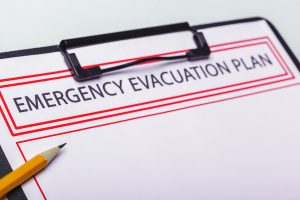
When an employee is injured and files a workers’ compensation claim, their stress and anxiety levels often increase. This process is usually unfamiliar to them, and they may fear the unknown. Following a work-related injury, the employee will likely need more supervision or managerial oversight. The primary contact should be able to answer the claims examiner’s questions about the injury, investigation, safety concerns, and any prior health issues.
Initial Meeting and Communication
After an injury occurs, it is crucial to arrange a meeting between the injured worker and their supervisor. During this meeting, you can discuss the initial steps of the process and establish expectations regarding light duty work and medical treatment. The employer is responsible for determining when, where, and how to reintegrate an injured worker into work within the employee’s restrictions. This meeting will likely establish the tone for the rest of the recovery process.
Ongoing Support and Communication
Maintaining regular contact with the injured employee and their doctor is essential. Stay positive in your interactions, and communicate with empathy and concern. A supportive culture must come from the top down. Employees who feel management does not care about them may have more injuries and attempt to stay off work longer.
Management should support the injured worker throughout their recovery. When an employee suffers an injury at home or has an illness, communication is typically maintained—workplace injuries should be no different. Avoid placing blame for the injury and manage co-workers’ expectations. Keeping co-workers informed (while maintaining confidentiality) helps everyone stay on the same page. Co-workers can have a significant impact on an injured employee’s return to work and recovery.
Keeping the Injured Worker Connected
If the injured worker is off work for an extended period, it is important to keep them connected to the workplace. If light-duty work is not possible, some ideas for keeping them connected include:
- Weekly phone calls with job status updates or news from work
- Inviting them to staff meetings or functions
- Inviting them to training days or safety talks
Remember, these employees are an important part of your organization, and keeping them involved can positively impact the claims process.
Model Safety Programs Available
Enhance your organization’s safety and compliance with our customizable model safety programs. Designed to meet various OSHA standards, these programs can be tailored to address your specific concerns effectively and efficiently.
Find Topics on:
- Equipment & Mechanical Hazards
- Personal Protective Equipment
- Chemical & Biological Hazards
- Environmental Exposure
- Excavation & Trenching
- Safe Driving
- OSHA Required
Emergency Preparedness at Work:
Fire and Tornado Safety Plans

Do you know what to do in case of an emergency while you are at work? What about your co-workers—are they prepared?
Emergencies can encompass a wide range of situations. This article will focus on two major types: fires and tornadoes. Every employer should have an emergency plan in place, clearly posted for employees, citizens, and guests. The primary focus of any emergency plan should be life safety.
Fire Safety Plan
A fire safety plan should designate a safe meeting place that is within a reasonable walking distance but far enough away from the building to ensure that emergency crews are not hindered by pedestrians. Each room should have a map directing occupants to the nearest exit and the accountability location. For simplicity, all offices in the building should use the same gathering location for accountability.
A single person should be designated to report for accountability, with at least one or two backups in case of absence. All employees should check in with this individual, who will then serve as the primary contact for emergency crews. The fire department needs to know if everyone is accounted for, as this information helps them prioritize their efforts. There is a significant difference between attempting to save the structure of a building and saving lives.
Severe Weather Plan
When it comes to severe weather, do you know the difference between a severe thunderstorm and a tornado? The key difference is rotation: a tornado involves rotating winds, while a severe thunderstorm can have straight-line winds that are just as strong. Both can cause significant damage.
Do you know where the safest area in your office building is located? This is a question that should be answered well in advance. Severe weather plans should be developed and posted ahead of time, with maps in each room indicating the most direct route to the designated shelter area.
Similar to the fire plan, all employees need to gather in one place—the safest area of the building—for accountability. Everyone should remain there until the weather warning has expired. If there is significant damage to the building, your designated contact person can inform emergency crews whether everyone is accounted for or if there is a need to search the rubble for survivors.
Conclusion
Preparedness is key to ensuring safety during emergencies. By having well-developed and clearly posted fire and severe weather plans, organizations can better protect their employees, guests, and the wider community. Make sure you know the protocols and ensure that your co-workers are also informed.
Our office will be closed Wednesday, June 19 in observation of Juneteenth National Independence Day.





